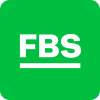The History of Forex Trading

Nowadays, Forex trading is available in every household if you have a reliable PC and a stable Internet connection. However, not a lot of people know that currency exchange is far from a new thing. In fact, it has been around since ancient times, when the first human civilizations started using money and established trade relations between each other.
In this article, you’ll learn about the evolution of currency exchange over the centuries and how exactly modern Forex trading developed and came to be as we know it.
Early history
The first known form of currency — the shekel — was invented around 5,000 years ago by the Mesopotamians. Before that, bartering was the main method of exchange. Such goods as animal hide, salt, and spices had been in high demand and used as a medium to exchange other goods.
Then, around 700 BC people across multiple countries started using gold (and sometimes silver) to produce the first coins. These earliest currencies helped to shape the economy, bringing uniformity and standardization to trading.

The first Forex market
As the time passed, more and more countries emerged all around the world, using their own currencies and opening trade with their neighbors. For a long while, there hadn’t been any major attempts to create a separate institution for Forex trading specifically. However, in the 17th century, Amsterdam opened the first Forex market in Europe. This market was focused on trading currencies of the County of Holland and the Kingdom of England, which helped to stabilize the exchange rate of the currency pair. After this, the Forex market and Forex trading started to spread all over the world.
The rise and fall of the Gold Standard
With time, it became clear that using gold and silver coins in everyday trading wasn’t feasible since there weren’t as many gold coins in circulation. To fix this, governments started to introduce paper money that acted as a promise to pay the bearer of a note a specified amount of gold or silver.
However, this paper money had no intrinsic value without a government’s decree connecting its value to the value of precious metals. If a country decided to print a lot of paper money at will, it could lead to depreciation of the value of its currency.
In order to avoid it, many countries worldwide decided to adopt the so-called Gold Standard. This standard allowed the governments to link the value of their currencies to a fixed quantity of gold. For example, if one ounce of gold was set to cost $1,000, then the value of one dollar equaled 0.001 of an ounce of gold. Because of this, the amount of paper money a country could print was limited to the amount of gold it held in its reserves. This standard ensured price stability and hindered inflation due to the governments’ inability to expand the money supply.
As for foreign exchange, the new relation between the value of a currency and gold made it easier to connect different currencies with each other. Since there were different amounts of each currency required to buy one ounce of gold, it started to act as a measure for the exchange rates.
By the end of the 19th century the Gold Standard was in use in the majority of industrial countries all over the world. It created better conditions for fostering international trade and expedited the industrial revolution.
However, when the First World War started, the expenses that countries had to endure were exceeding their gold reserves by a wide margin, which caused them to disregard the limitations imposed by the Gold Standard and start printing more money, no matter how large their actual gold reserves were.
By the end of the 1930s and with the Second World War in full swing, it became apparent that the Gold Standard wasn't sustainable when a country was going through an economic recession.

The Bretton Woods system: a new page in the history of international trading
Once the Second World War was starting to come to a close, the countries directly affected by the military action had a hard time getting back on their feet. In 1944, the delegates of several countries from all over the world held a conference in Bretton Woods, USA, and signed the Bretton Woods Accord. This event laid the foundation for a new international economic system aimed to strengthen international financial relations.
The new system was partially based on the Gold Standard, but this time only the value of the US dollar was fixed to the value of gold ($35 per ounce) because at the time the USA held the largest gold reserve in the world. The rest of the countries using the system (43 without the USA) would in return peg their own currencies to the US dollar, with a maximum deviation of 1% allowed. If the value of a currency started to deviate outside the allowed range, the country would have to correct it by buying or selling the US dollar.
This system provided the necessary stability to the global markets and helped to minimize the exchange rate volatility. It also led to the US dollar becoming the global reserve currency.
The Bretton Woods system lasted for several decades until the 1970s, when the number of dollars in circulation around the world started to exceed the supply of gold in the US gold reserve. Because of this, in 1971 the US President Richard Nixon temporarily suspended the operation of the system, and by 1973 it collapsed completely.
The free-floating system
The end of the Bretton Woods system triggered the rise of the free-floating system where the value of a currency is floating freely without being tied to the price of gold. This new system was and still is based on the concept of fiat money, the value of which is not backed by any commodity, but by the government issuing it.
In the free-floating system, a currency’s value is allowed to change in accordance with its country’s stability and economic strength, while also reflecting levels of supply and demand of this currency on the Forex market.
Even though the Gold Standard has been abandoned, not all countries accepted the free-floating system as their new norm. For example, until recently China had been pegging its currency, the yuan, to the US dollar. Currently, the central bank of China allows the yuan to float, but intervenes if its exchange rate rises 2% above or falls 2% below the day’s midpoint rate.
Nevertheless, the free-floating system has taken over the majority of the world, allowing for more freedom on the Forex market and keeping it safe from governments’ interventions.
The Internet age
The Internet is truly a wonder of technological progress that brought together billions of people from all over the world. With the new digital environment in place, not only central banks and large financial institutions have access to the Forex market. The creation of multiple online trading platforms allowed Forex trading to spread and gain popularity among individuals who are now known as retail traders. This brought even more players to the Forex market, and with the help of brokers they can now take part in an activity that didn’t used to be available to the general public.
This is for informational purposes only and does not contain — or to be considered as containing — investment advice, suggestion or recommendation for trading.




